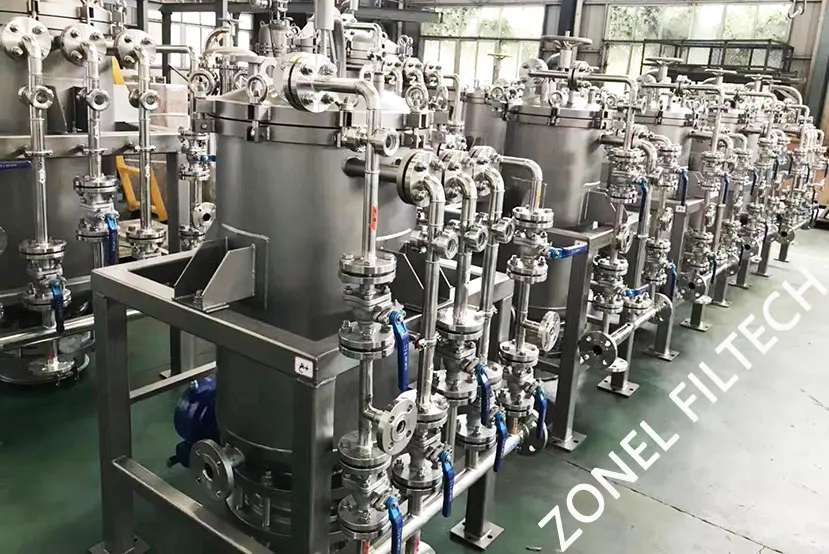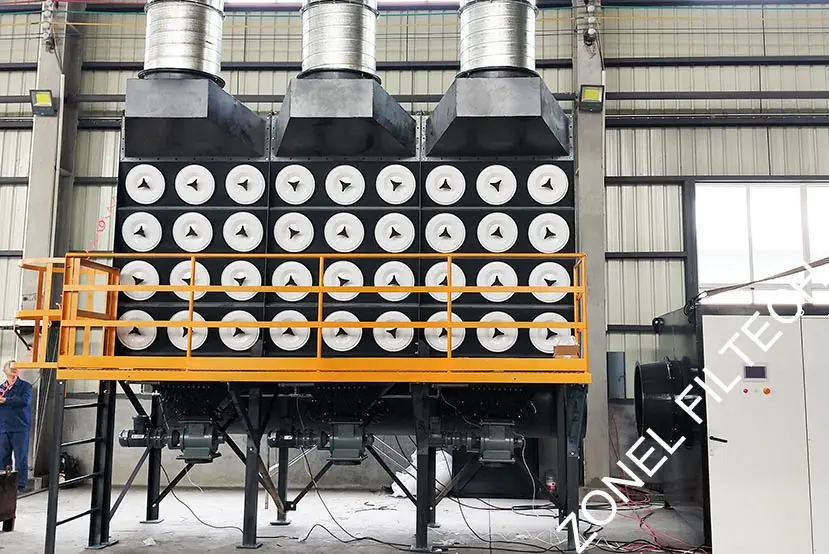Filtration is a crucial process in various industries and applications, whether it’s purifying water, capturing contaminants in the air, or separating particles in manufacturing processes. Two common types of filtration are liquid filtration and dust filtration, each serving distinct purposes and utilizing specific techniques. Now we will examine the disparities between liquid filtration and dust filters, investigating their diverse applications, methodologies, and significance across various fields.
Aspect | Liquid Filtration | Dust Filters |
Purpose | Remove impurities or particles from liquids | Capture airborne particles, dust, and pollutants |
Media | Porous materials such as filter paper or cloth | Fibers, meshes, screens, electrostatically charged media |
Methods | Gravity, pressure, vacuum filtration | Mechanical filtration, electrostatic filtration, HEPA filtration |
Applications | Water treatment, pharmaceutical manufacturing, food and beverage industry, chemical processing | HVAC systems, industrial processes, cleanrooms, environmental control systems |
Particle Size Range | Larger particles suspended in liquids | Airborne particles, including fine particulate matter |
Efficiency | Depends on filter medium and method used | Varies depending on filter type, with HEPA filters being highly efficient |
Common Examples | Filter presses, membrane filters, cartridge filters | Air filters, HVAC filters, dust collectors |
Table of Contents
ToggleLiquid Filtration Systems:
Liquid filtration involves removing impurities or particles from liquids such as water, chemicals, oils, or beverages. The filtration process is indispensable in a multitude of industries, spanning pharmaceuticals, food and beverage production, wastewater treatment, and chemical processing.

Methods of Liquid Filtration:
Gravity Filtration: This simple method relies on the force of gravity to pass the liquid through a filter medium, typically a porous material like filter paper or cloth. As the liquid flows through the medium, particles are trapped, leaving behind a clearer liquid.
Pressure Filtration: High-pressure filter encompasses the application of force to propel the liquid through a filter medium, thereby augmenting the filtration rate. This technique finds widespread use in industrial settings where rapid flow rates or effective separation are imperative.
Vacuum Filtration: In vacuum filtration, a vacuum pump is utilized to create suction, drawing the liquid through the filter medium. This method is particularly good at separating solids from liquid solutions.
Applications of Liquid Filtration Equipment:
Water Treatment: Municipalities use liquid filtration to purify drinking water by removing suspended particles, bacteria, and contaminants.
Pharmaceutical Manufacturing: Liquid filtration ensures the purity of pharmaceutical products by removing impurities and particulates from drug formulations.
Food and Beverage Industry: Filtration is crucial for clarifying juices, removing sediments from wines, and purifying oils and beverages.
Chemical Processing: Liquid filtration is employed in chemical manufacturing to separate solids from liquids and recover valuable products.
Dust Filtration System:
Dust filters, alternatively referred to as air filters or particulate filters, are engineered to capture airborne particles, dust, and pollutants that are suspended in the air. They are commonly used in HVAC systems, industrial processes, and environmental control systems to improve indoor air quality and protect equipment from contamination.

Methods of Dust Filtration:
Mechanical Filtration: Mechanical filters utilize physical barriers such as fibers, meshes, or screens to trap particles as air passes through. The captured particle size is contingent upon the pore size of the filter material.
Electrostatic Filtration: Electrostatic filters use electrostatic charges to attract and trap particles in the filter. This technique proves effective in capturing smaller particles that might otherwise elude mechanical filters.
High-Efficiency Particulate Air (HEPA) Filtration: HEPA filters boast remarkable efficiency in capturing particles as minuscule as 0.3 microns, achieving an impressive 99.97% effectiveness. These filters are commonly used in cleanrooms, hospitals, and environments requiring strict air quality control.
Applications of Dust Filters:
HVAC Systems: Dust filters are often used in heating, ventilation, and air conditioning (HVAC) systems to remove airborne particles and control indoor air quality.
Industrial Processes: Dust filters are used in manufacturing facilities to capture dust, smoke, and airborne contaminants generated during production processes.
Cleanrooms: Used in industries such as pharmaceuticals, electronics and biotechnology to maintain a sterile environment and avoid contamination.
Environmental Control: Industrial dust filtration system is employed in environmental control systems to mitigate air pollution, capture particulate matter, and comply with regulatory standards.
Differences and Similarities
While both liquid filtration and dust filters aim to remove impurities or particles, they differ in their methods, applications, and the nature of the substances they handle. Liquid filtration primarily deals with separating solids from liquids, whereas dust filters focus on capturing airborne particles suspended in the air. However, both types of filtration play crucial roles in maintaining cleanliness, purity, and safety in various industries and environments.
Liquid filtration and dust filters are essential processes utilized across diverse industries to remove impurities, contaminants, and particles from liquids and air, respectively. Understanding the differences and applications of these filtration techniques is crucial for ensuring product quality, environmental control, and occupational safety. By employing the appropriate filtration methods and technologies, industries can achieve efficient separation, purification, and protection against harmful substances, contributing to safer and healthier environments for all.
